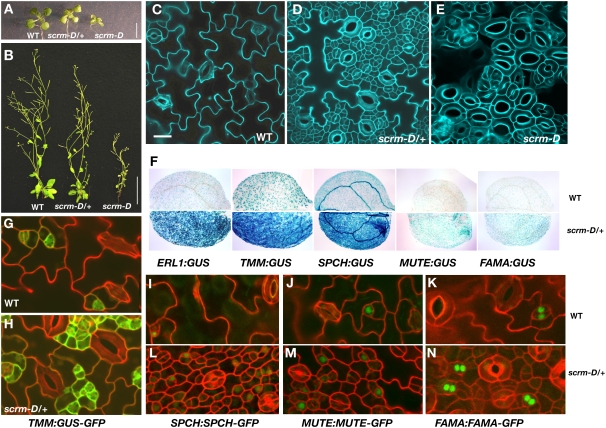Figure 1.
scrm-D Triggers Stomatal Differentiation.
(A) Two-week-old seedlings of wild-type, scrm-D/+ heterozygous, and scrm-D homozygous mutants. Bar = 5 mm.
(B) Six-week-old mature plants of wild-type, scrm-D/+ heterozygous, and scrm-D homozygous mutants. Bar = 5 cm.
(C) to (E) Cotyledon epidermis of the wild type (C), scrm-D/+ (D), and scrm-D (E). scrm-D/+ and scrm-D epidermis shows vastly increased stomatal differentiation. Bar = 20 μm.
(F) Cotyledons of the wild type (top) and scrm-D/+ (bottom) carrying the reporter construct (from left to right): ERL1:GUS, TMM:GUS, SPCH:GUS, MUTE:GUS, and FAMA:GUS. scrm-D/+ confers increased expression of stomatal cell lineage markers.
(G) to (N) Cotyledons of the wild type ([G] and [I] to [K]) and scrm-D/+ ([H] and [L] to [N]) carrying TMM:GUS-GFP ([G] and [H]) and translational fusion of SPCH:SPCH-GFP ([I] and [L]), MUTE:MUTE-GFP ([J] and [M]), and FAMA:FAMA-GFP ([K] and [N]). scrm-D/+ increases the number of cells expressing stomatal cell lineage markers (GFP; green).

